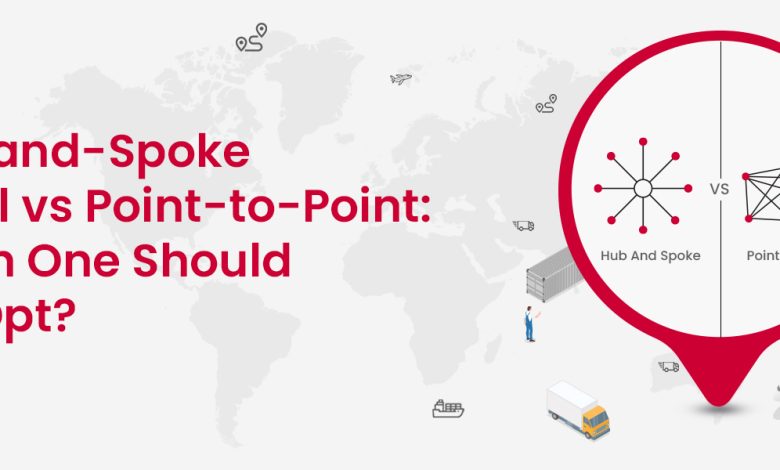Hub and spoke model in same-day delivery services
Hub and spoke model in same-day delivery services

The same-day delivery trend has been on the rise in recent years, as consumers have become increasingly accustomed to expecting their online orders to arrive within a day or two. This has put pressure on logistics companies to find ways to speed up delivery times, and many have turned to same-day delivery services as a way to meet customer expectations.
The size of the global same-day delivery market was
estimated at USD 4.6 billion in 2019; from 2020 to 2027,
Rapid e-commerce development, rising urbanization, and shifting consumer expectations about delivery services are the market’s primary drivers.
Hub and spoke model of distribution is increasingly being adopted in the transportation and warehousing industry due to its efficiency and cost-effectiveness. With the increasing demand for same-day delivery among global consumers,
the adoption of the hub and spoke model
is expected to fuel up in the upcoming years.
To understand the significance of the hub and spoke model in same-day delivery and its various other aspects, stay with this blog until the very end.
Understanding Hub and Spoke Model in Logistics
The hub and spoke distribution method makes use of a centralized “hub” to distribute goods. Everything either comes from
the hub or is delivered
there to a distributed to customers. From the hub,
commodities are transported
to smaller company-owned facilities, or spokes, for additional processing and distribution.
The hub and spoke model a revolutionized
by the airline industry. Regional airports are the used
airlines as the spokes from
which they operate flights while operating out of a central hub. Aviation professionals agree that the hub and spoke concept led to the airline industry’s rapid expansion because
it increased the efficient use of the limited resources available for air transit.
Challenges in Same-Day Delivery Services in Logistics
Insufficient delivery vehicles and drivers
For logistics companies, finding resources for last-mile delivery has always been difficult, and special requirements for same-day delivery have made those difficulties worse. In last-mile delivery operations, a sizable portion of the vehicles and drivers are in demand. Same-day delivery provides logistics companies with very little time to find such resources.
Unorganized dispatching and scheduling
The majority of logistics businesses employ time-consuming manual dispatching and routing procedures. For a same-day delivery business, it can be a nightmare. Routing and dispatching need to run flawlessly and have to take place within an hour to ensure that the majority of the time is free for delivery and warehousing.
Lack of a model for well-distributed fulfillment centers
Hyperlocal fulfillment centers are necessary for same-day delivery. However, these fulfillment centers are tiny and can only hold a modest amount of product. Consequently, a hub and spoke model that is organized is highly required.
High expenses for building infrastructure
Same-day delivery can be a costly proposition for logistics companies, as it requires significant investment in infrastructure and personnel. Nevertheless, many companies have found that the benefits of offering same-day delivery outweigh the costs, as it helps to improve customer satisfaction and loyalty.
How Hub and Spoke Model can help in Same-Day Deliveries Services in Logistics?
- Enhanced Driver Retention and Recruitment
They don’t have to travel very far by vehicle. The model also enhances the reliability and security of the route. It, therefore, raises the driver’s efficiency and reliability. This further results in better supply chain operations with efficient drivers, who can compete well in fulfilling same-day delivery.
- Advanced Route Planning
Route design can be made more than efficient because
the freight network revolves around the hub and spokes. When designing the shipment plan, the management can take into account things like customer preferences, delivery times, peak traffic hours,
last-mile delivery operations, ground restrictions, and more.
- Cuts Down on Logistics Routes
The hub-and-spoke distribution model eliminates route overlap. Additionally, it reduces the need of having various distribution hubs inside cities. This approach plans the route while also considering last-mile delivery into account, which significantly lowers the logistical expense. As a result, this model is generally affordable.
- Streamlines Shipment
the hub and delivered to the specified locations,
warehouse managers may effectively arrange shipments. The managers can organize the delivery agents’ daily schedules. Furthermore, loading and unloading as well as stockpiling,
are made simple and effective by the central hub.
- Sustained Load Movement
Continuous load movement is one of the major benefits of employing the hub and spoke distribution model. Since this model enables centralized handoffs, every hub will always be operating at maximum efficiency.
Conclusion
To sum up, the hub and spoke model of distribution can help overcome the major challenges in same-day delivery by providing an uninterrupted movement of shipments through a centralized hub.
Advanced logistics aggregator platforms such as NimbusPost prefer the hub and spoke model in facilitating warehousing and fulfillment services to e-commerce companies, alongside providing tech-enabled domestic and international courier services by working with leading national and global courier partners such as Delhivery, Blue Dart, FedEx, Shadowfax, etc.




